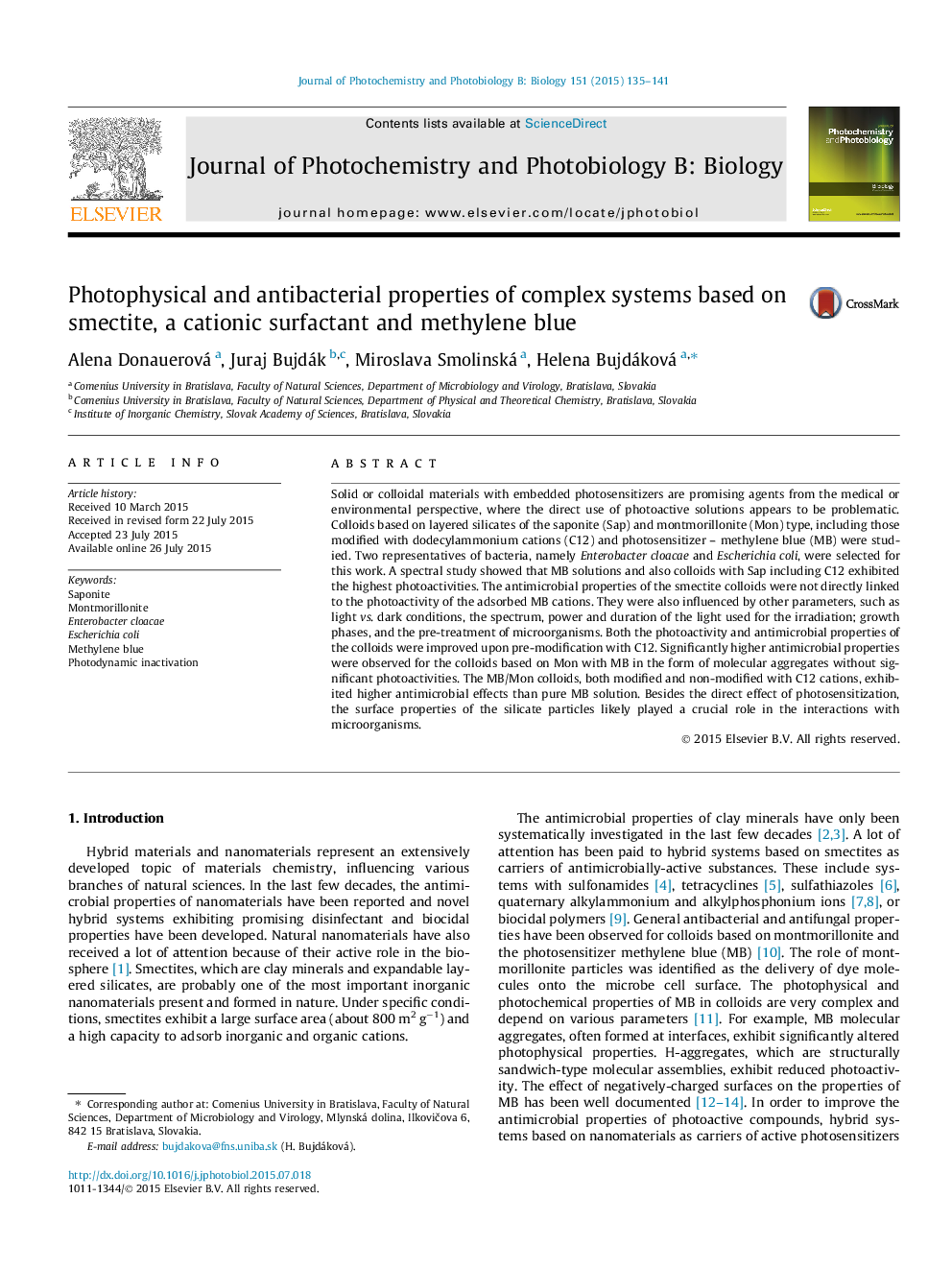| کد مقاله | کد نشریه | سال انتشار | مقاله انگلیسی | نسخه تمام متن |
|---|---|---|---|---|
| 30226 | 44465 | 2015 | 7 صفحه PDF | دانلود رایگان |
• The modification of Sap with the cationic surfactant led to a significant enhancement of MB photophysical activity.
• Surface properties of smectites play an important role in contact with bacterial cells.
• Photodynamic efficiency depended on the growth phase of bacteria.
• The MB/Sap ratio played a significant role for the interaction with cells.
• Organically-modified Mon with MB has highest antimicrobial effect.
Solid or colloidal materials with embedded photosensitizers are promising agents from the medical or environmental perspective, where the direct use of photoactive solutions appears to be problematic. Colloids based on layered silicates of the saponite (Sap) and montmorillonite (Mon) type, including those modified with dodecylammonium cations (C12) and photosensitizer – methylene blue (MB) were studied. Two representatives of bacteria, namely Enterobacter cloacae and Escherichia coli, were selected for this work. A spectral study showed that MB solutions and also colloids with Sap including C12 exhibited the highest photoactivities. The antimicrobial properties of the smectite colloids were not directly linked to the photoactivity of the adsorbed MB cations. They were also influenced by other parameters, such as light vs. dark conditions, the spectrum, power and duration of the light used for the irradiation; growth phases, and the pre-treatment of microorganisms. Both the photoactivity and antimicrobial properties of the colloids were improved upon pre-modification with C12. Significantly higher antimicrobial properties were observed for the colloids based on Mon with MB in the form of molecular aggregates without significant photoactivities. The MB/Mon colloids, both modified and non-modified with C12 cations, exhibited higher antimicrobial effects than pure MB solution. Besides the direct effect of photosensitization, the surface properties of the silicate particles likely played a crucial role in the interactions with microorganisms.
Figure optionsDownload as PowerPoint slide
Journal: Journal of Photochemistry and Photobiology B: Biology - Volume 151, October 2015, Pages 135–141
